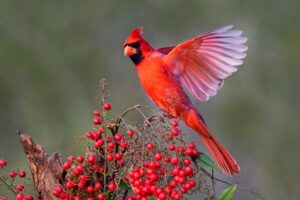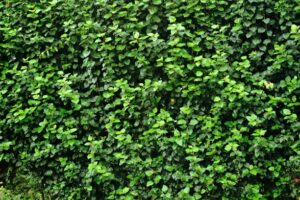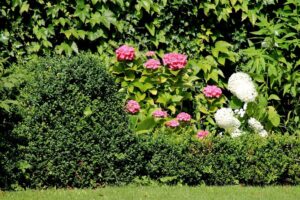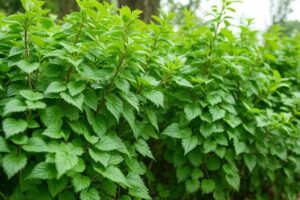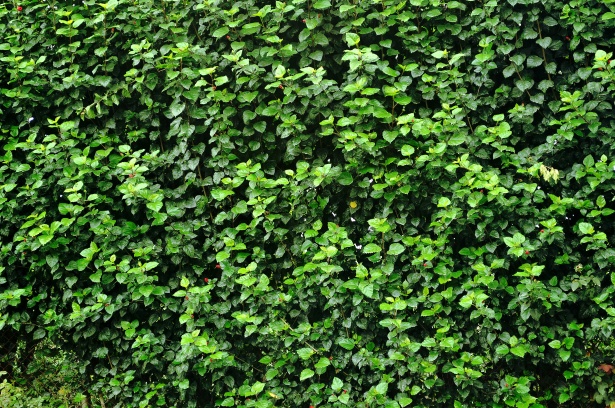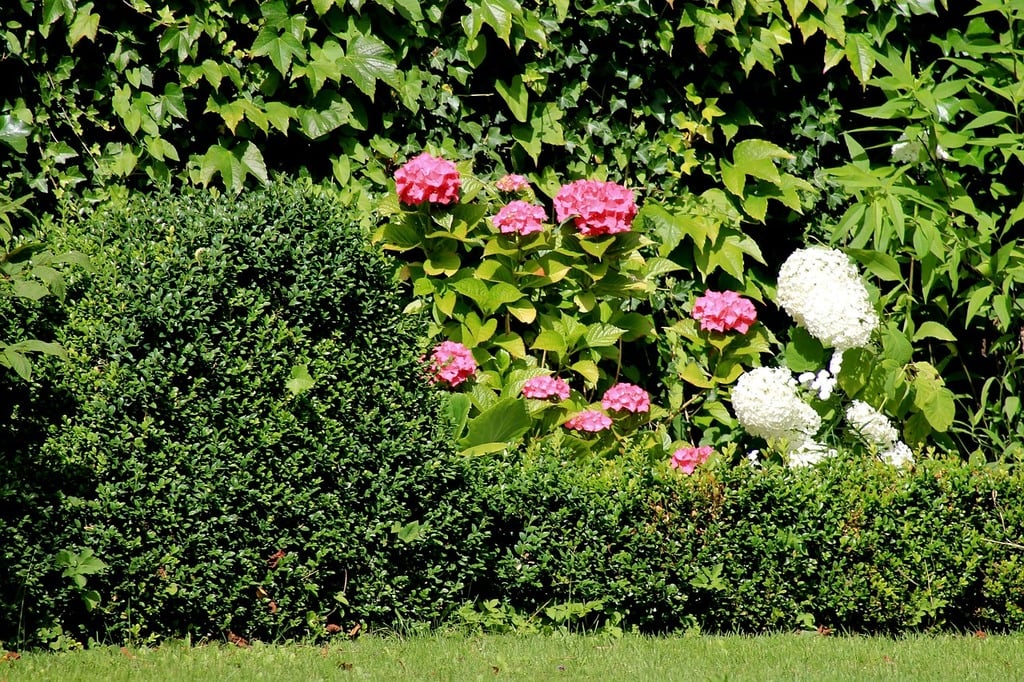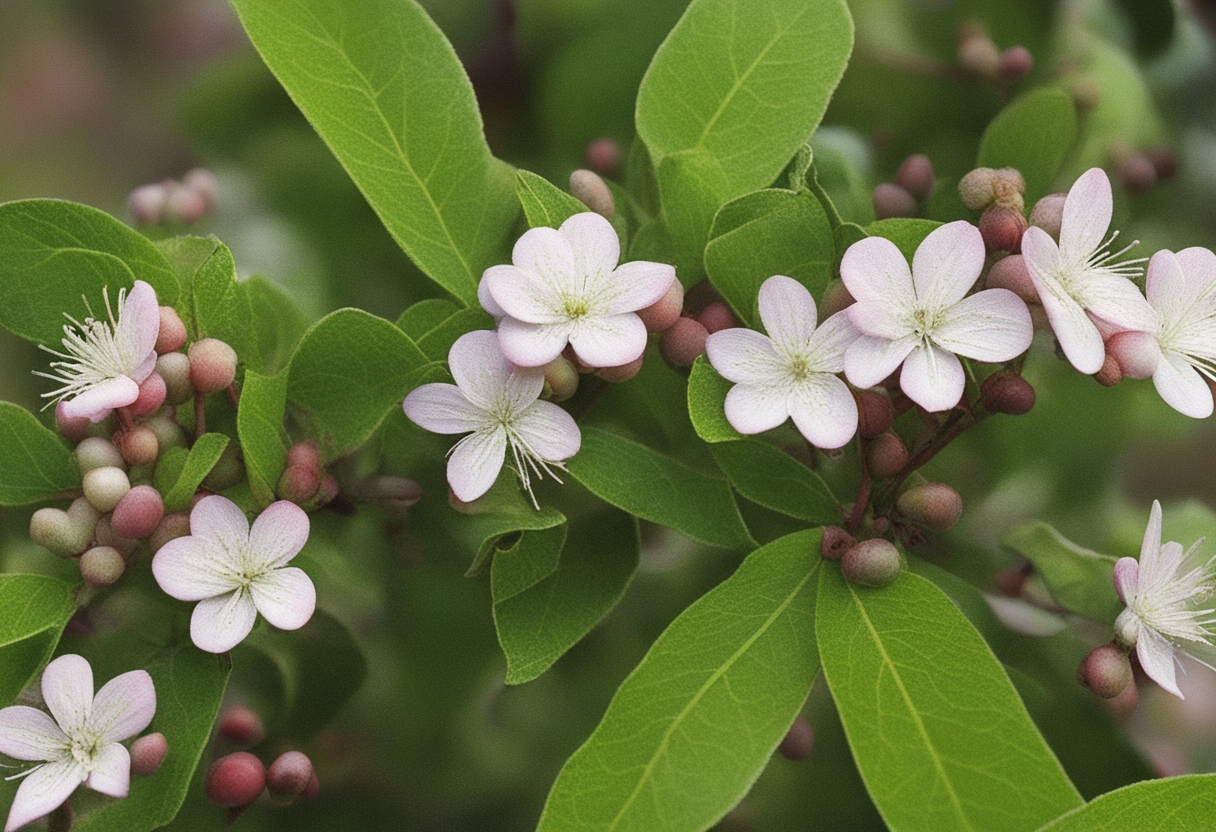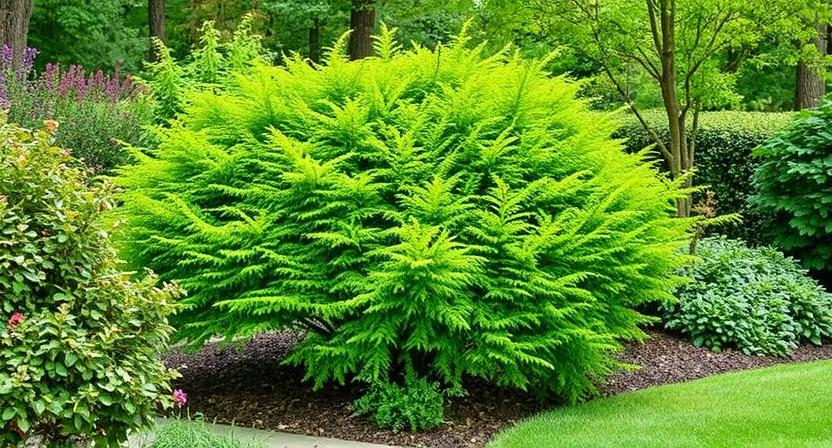Understanding the Importance of Pruning for Healthy Shrubs
Proper pruning is essential for maintaining the health and vitality of shrubs in your garden. By removing dead, diseased, or damaged branches, pruning helps to prevent the spread of harmful pests and diseases, reducing the risk of extensive damage to the entire shrub. Additionally, pruning promotes optimal growth by directing the plant’s energy towards the development of new, healthy branches and foliage. This not only improves the overall appearance of the shrub but also enhances its ability to withstand harsh weather conditions and other environmental stresses. Furthermore, regular pruning allows for better air circulation and sunlight penetration, which prevents the growth of molds and mildew and ensures that the shrub receives the necessary light and nutrients for healthy growth. Pruning also helps to control the size and shape of shrubs, keeping them in proportion with the surrounding landscape and preventing overcrowding. Whether you have flowering, evergreen, or deciduous shrubs, understanding the importance of pruning is key to ensuring their continued growth and health.
• Removing dead, diseased, or damaged branches prevents the spread of pests and diseases
• Pruning directs energy towards new growth and improves overall appearance
• Enhanced ability to withstand harsh weather conditions and environmental stresses
• Better air circulation and sunlight penetration prevent molds and mildew
• Shrubs receive necessary light and nutrients for healthy growth
• Control size and shape of shrubs to prevent overcrowding
• Pruning is important for all types of shrubs – flowering, evergreen, deciduous
Identifying the Ideal Time to Prune Different Types of Shrubs
Identifying the ideal time to prune different types of shrubs is essential for maintaining their health and promoting optimal growth. While general guidelines can be followed, it is important to remember that specific types of shrubs may have their own unique requirements.
For flowering shrubs, it is generally recommended to prune them immediately after they have finished flowering. This allows the shrub to allocate its energy towards producing new growth and preparing for the next flowering season. Pruning flowering shrubs during their dormant period may result in the loss of flower buds and reduced blooming.
On the other hand, evergreen shrubs can be pruned throughout the year, but it is generally best to avoid heavy pruning during their dormant period. Light pruning during the spring or early summer can help stimulate growth while ensuring the shrub maintains its shape. Additionally, evergreen shrubs can also be lightly pruned in late summer or early fall to remove any dead or damaged branches.
Deciduous shrubs, which shed their leaves during the winter, can be pruned during their dormant period. Late winter or early spring is an ideal time to prune deciduous shrubs as it allows for the removal of dead or diseased branches, as well as the shaping of the shrub before new growth begins. Avoid pruning too late in the spring as it may result in the loss of flower buds or delayed blooming.
In conclusion, understanding the ideal time to prune different types of shrubs is crucial for their overall health and growth. By following the appropriate timing for each type of shrub, gardeners can ensure that their shrubs thrive and maintain their desired shape and size.
• Flowering shrubs should be pruned immediately after they finish flowering to promote new growth and prepare for the next flowering season.
• Pruning during their dormant period may result in the loss of flower buds and reduced blooming.
• Evergreen shrubs can be pruned throughout the year, but heavy pruning during their dormant period should be avoided.
• Light pruning in spring or early summer stimulates growth and maintains shape.
• Light pruning in late summer or early fall removes dead or damaged branches.
• Deciduous shrubs can be pruned during their dormant period (late winter or early spring).
• Pruning at this time allows for removal of dead/diseased branches and shaping before new growth begins.
• Avoid pruning too late in spring to prevent loss of flower buds or delayed blooming.
Selecting the Right Tools for Pruning Shrubs
When it comes to pruning shrubs, having the right tools can make a significant difference in the outcome of your efforts. One of the essential tools for pruning shrubs is a pair of hand pruners, also known as secateurs. These pruners are designed to make clean and precise cuts on small branches and twigs. Look for pruners with a sharp, bypass blade for a smooth cutting action. Avoid using anvil pruners as they tend to crush the branches, which can hinder the shrub’s growth and lead to disease.
For trimming larger branches, a pair of pruning loppers is a valuable tool to have. Loppers have long handles that provide leverage and allow you to reach higher branches. Look for loppers with sharp, bypass blades to ensure clean cuts without damaging the shrub. Additionally, consider the weight and balance of the loppers to ensure comfortable and efficient use.
In addition to handheld tools, a pruning saw is useful for tackling thicker branches. Choose a pruning saw with a sharp, curved blade that can easily cut through larger branches. Look for a saw with a comfortable grip and a blade that is replaceable or can be sharpened for long-term use.
Remember, always use sharp and clean tools when pruning shrubs to prevent the spread of diseases. Properly maintaining your tools, such as sharpening blades and oiling hinges, will ensure they last longer and perform optimally when pruning.
• Hand pruners, also known as secateurs, are essential for making clean and precise cuts on small branches and twigs.
• Look for pruners with a sharp, bypass blade for a smooth cutting action.
• Avoid using anvil pruners as they tend to crush the branches, hindering growth and leading to disease.
• For trimming larger branches, pruning loppers are valuable tools.
• Loppers have long handles that provide leverage and reach higher branches.
• Look for loppers with sharp, bypass blades to ensure clean cuts without damaging the shrub.
• Consider the weight and balance of the loppers for comfortable use.
• A pruning saw is useful for tackling thicker branches.
• Choose a pruning saw with a sharp, curved blade that can easily cut through larger branches.
• Look for a saw with a comfortable grip and replaceable or sharpenable blades.
Remember:
– Always use sharp and clean tools when pruning shrubs to prevent the spread of diseases.
– Properly maintain your tools by sharpening blades and oiling hinges.
Proper Techniques for Pruning Shrubs to Promote Optimal Growth
Regular pruning is essential for promoting optimal growth and maintaining the health of shrubs. The first step in proper shrub pruning is to remove any dead or diseased branches. This not only improves the overall appearance of the shrub but also prevents the spread of diseases and pests. Using sharp, clean pruning shears, make clean cuts just above a healthy bud or branch junction. By removing these unwanted branches, you allow the shrub to direct its energy towards healthy growth and the production of new shoots.
Proper technique also involves shaping the shrub to maintain its size and form. Regularly removing the tips of the branches helps control the overall size and shape of the shrub. When pruning for shape, always make cuts above a bud facing towards the outside of the shrub. This ensures that new growth will develop in the desired direction, preventing overcrowding and allowing for proper air circulation and sunlight penetration. Pruning at the appropriate time, depending on the specific type of shrub, is crucial to promote optimal growth. It is important to note that each type of shrub has different pruning needs, and understanding these requirements is key to achieving the best results.
• Remove any dead or diseased branches to improve appearance and prevent spread of diseases and pests
• Use sharp, clean pruning shears for clean cuts just above a healthy bud or branch junction
• Direct the shrub’s energy towards healthy growth and new shoots by removing unwanted branches
• Regularly remove tips of branches to control overall size and shape of the shrub
• Make cuts above a bud facing towards the outside of the shrub when pruning for shape
• Ensure new growth develops in desired direction, preventing overcrowding and allowing proper air circulation and sunlight penetration
• Prune at appropriate time based on specific type of shrub to promote optimal growth
• Understand each type of shrub’s pruning needs for best results.
Removing Dead or Diseased Branches for Improved Health
Pruning plays a crucial role in maintaining the health and vitality of shrubs. One important aspect of pruning is the removal of dead or diseased branches. Dead branches not only detract from the aesthetic appeal of shrubs, but they can also pose a risk by falling and potentially causing injury to nearby individuals or damage to property. Additionally, dead branches create an entry point for pests and diseases, which can spread and negatively impact the overall health of the shrub.
Identifying and removing dead or diseased branches should be a regular part of shrub maintenance. By eliminating these branches, the shrub is able to allocate its resources effectively, promoting healthy growth and vigor. Furthermore, removing dead or diseased branches allows for better air circulation and sunlight penetration, which are essential for the shrub’s overall vitality. Regular inspections should be conducted to identify any signs of decay or disease, such as discoloration, bark damage, or the presence of fungal growth. Prompt removal of these branches will not only improve the shrub’s health but also help prevent the spread of pests and disease to other parts of the plant.
• Dead branches can detract from the aesthetic appeal of shrubs
• Dead branches pose a risk by potentially falling and causing injury or property damage
• Dead branches create an entry point for pests and diseases
• Regular inspections should be conducted to identify signs of decay or disease
• Prompt removal of dead or diseased branches promotes healthy growth and vigor
• Removing dead or diseased branches allows for better air circulation and sunlight penetration
Promoting Air Circulation and Sunlight Penetration through Pruning
When it comes to maintaining healthy shrubs, promoting air circulation and sunlight penetration through pruning is essential. Pruning helps to open up the shrub’s canopy, allowing air to flow more freely and sunlight to reach all parts of the plant. This is particularly important in preventing the growth of fungal diseases, as adequate air circulation helps to reduce moisture build-up. By pruning away excess branches and foliage, you can create a more open and airy environment for your shrubs to thrive.
In addition to improving air circulation, pruning also ensures that sunlight can penetrate deep into the shrub. Sunlight is crucial for photosynthesis, the process by which plants convert light energy into food. By removing any dense or overcrowded branches, you create space for sunlight to reach the inner parts of the shrub, stimulating healthy growth and development. Sunlight also helps in maintaining vibrant foliage and promoting flowering in certain types of shrubs. Regular pruning, therefore, plays a vital role in maximizing the amount of sunlight received by your shrubs, ultimately contributing to their overall health and vigor.
• Pruning opens up the shrub’s canopy, allowing air to flow more freely
• Adequate air circulation reduces moisture build-up and prevents fungal diseases
• Removing excess branches and foliage creates a more open and airy environment for shrubs to thrive
• Sunlight is crucial for photosynthesis, the process by which plants convert light energy into food
• Pruning ensures that sunlight can penetrate deep into the shrub
• Space created by pruning allows sunlight to reach inner parts of the shrub, stimulating healthy growth and development
• Sunlight helps maintain vibrant foliage and promotes flowering in certain types of shrubs
• Regular pruning maximizes the amount of sunlight received by your shrubs
• Contributes to overall health and vigor
Controlling the Size and Shape of Shrubs with Pruning
Pruning is not only essential for maintaining the health of shrubs but also for controlling their size and shape. By selectively removing branches, gardeners can play an active role in shaping the growth pattern of their shrubs. This is particularly important for shrubs that have a tendency to become too large or unruly, as well as for those that may be obstructing walkways or blocking sunlight. Through strategic pruning, you can create a more visually appealing and harmonious garden landscape.
One of the main goals of pruning for size and shape control is to encourage shrubs to grow in a compact and balanced manner. By removing excessive or wayward branches, you can direct the plant’s growth towards a desired shape and size. This not only contributes to the overall aesthetic appeal of your garden but also facilitates easier maintenance and allows for better air circulation and sunlight penetration. Keep in mind that the specific pruning techniques will vary depending on the type of shrub you have, so it’s important to familiarize yourself with the particular requirements of your plant species.
• Pruning is essential for maintaining the health of shrubs and controlling their size and shape.
• Selectively removing branches allows gardeners to shape the growth pattern of shrubs.
• Strategic pruning can prevent shrubs from becoming too large or unruly.
• Pruning helps in clearing walkways and allowing sunlight to reach other plants.
• Compact and balanced growth can be achieved through proper pruning techniques.
• Removing excessive or wayward branches directs the plant’s growth towards a desired shape and size.
• Pruning contributes to the overall aesthetic appeal of your garden landscape.
• Proper pruning facilitates easier maintenance, air circulation, and sunlight penetration.
Pruning Tips for Specific Types of Shrubs (e.g., flowering, evergreen, deciduous)
Flowering shrubs add a burst of color and beauty to any landscape, but they require specific pruning techniques to ensure their health and vitality. One important tip is to prune flowering shrubs immediately after they finish blooming. This allows the plant ample time to grow new buds and set next year’s flowers. Use sharp, clean pruning shears to make clean cuts, and remove any dead or damaged branches. Additionally, for shrubs that bloom on new wood, it is beneficial to prune them in early spring before new growth begins. This will help promote new flower production and maintain a tidy shape.
Evergreen shrubs, on the other hand, require a different approach when it comes to pruning. It is crucial to avoid heavy pruning as it may cause stress and damage to these plants which often have a slower growth rate. Instead, focus on trimming back any overgrown or wayward branches to maintain the desired shape. Light, selective pruning can be done throughout the year to remove any dead or diseased branches, making sure to use clean cutting tools. Additionally, consider removing any necessary growth from the bottom of the plant to promote better air circulation and sunlight penetration. By following these proper pruning techniques, evergreen shrubs will remain healthy and vibrant year-round.
• Prune flowering shrubs immediately after they finish blooming to allow for new bud growth and next year’s flowers.
• Use sharp, clean pruning shears to make clean cuts and remove any dead or damaged branches.
• For shrubs that bloom on new wood, prune them in early spring before new growth begins to promote flower production and maintain shape.
For evergreen shrubs, a different approach is needed for pruning:
• Avoid heavy pruning as it may cause stress and damage due to their slower growth rate.
• Instead, focus on trimming back overgrown or wayward branches to maintain the desired shape.
• Light, selective pruning can be done throughout the year to remove dead or diseased branches using clean cutting tools.
• Consider removing necessary growth from the bottom of the plant for better air circulation and sunlight penetration.
By following these proper pruning techniques specific to each type of shrub, both flowering and evergreen varieties will remain healthy and vibrant throughout the year.
Dealing with Overgrown or Neglected Shrubs through Pruning
When shrubs become overgrown or neglected, pruning is a key method for bringing them back to a healthy state. Overgrown shrubs can be unattractive and may cause problems if they obstruct pathways or windows. Neglected shrubs, on the other hand, can become weak and susceptible to diseases. By using proper pruning techniques, these shrubs can be revitalized and rejuvenated.
One important step in dealing with overgrown or neglected shrubs is to remove dead or diseased branches. These branches not only detract from the overall appearance of the shrub but can also spread diseases to healthy parts. By removing them, the shrub is able to focus its energy on the healthy branches, promoting new growth and increased vitality. Regular pruning will also enhance air circulation and sunlight penetration, which are vital for the overall health and development of the shrub.
• Removing dead or diseased branches is an important step in dealing with overgrown or neglected shrubs.
• Dead or diseased branches can detract from the overall appearance of the shrub and spread diseases to healthy parts.
• By removing these branches, the shrub can focus its energy on healthy branches, promoting new growth and increased vitality.
• Regular pruning enhances air circulation and sunlight penetration, crucial for the overall health and development of the shrub.
Maintaining and Monitoring Pruned Shrubs for Continued Growth and Health
Once you have pruned your shrubs to promote optimal growth and health, it is crucial to maintain and monitor them regularly. By doing so, you can ensure that your efforts have paid off and that your shrubs continue to thrive. A key aspect of maintaining pruned shrubs is regular watering. Shrubs often require more water after pruning to support new growth, so it is essential to monitor the moisture levels in the soil and water accordingly. Additionally, be sure to remove any weeds or grasses that may compete with the shrubs for nutrients, as this can hinder their growth.
In addition to watering and weed control, monitoring the overall health of your pruned shrubs is important. Regularly inspect the shrubs for any signs of pest infestations or diseases. Look for discoloration, wilting, or abnormal growth patterns, as these can indicate potential issues that need to be addressed. If any branches show signs of disease or are dead, promptly remove them to prevent further damage. Keep an eye on the shrubs’ size and shape as well, as regular pruning may be necessary to maintain their desired appearance and prevent overgrowth. By regularly maintaining and monitoring your pruned shrubs, you can ensure their continued growth and overall health.
• Regularly water the shrubs to support new growth
• Monitor moisture levels in the soil and adjust watering accordingly
• Remove weeds or grasses that may compete with the shrubs for nutrients
• Inspect the shrubs for signs of pest infestations or diseases
• Look for discoloration, wilting, or abnormal growth patterns as potential indicators of issues
• Promptly remove any diseased or dead branches to prevent further damage
• Keep an eye on the size and shape of the shrubs to prevent overgrowth
and maintain their desired appearance.




